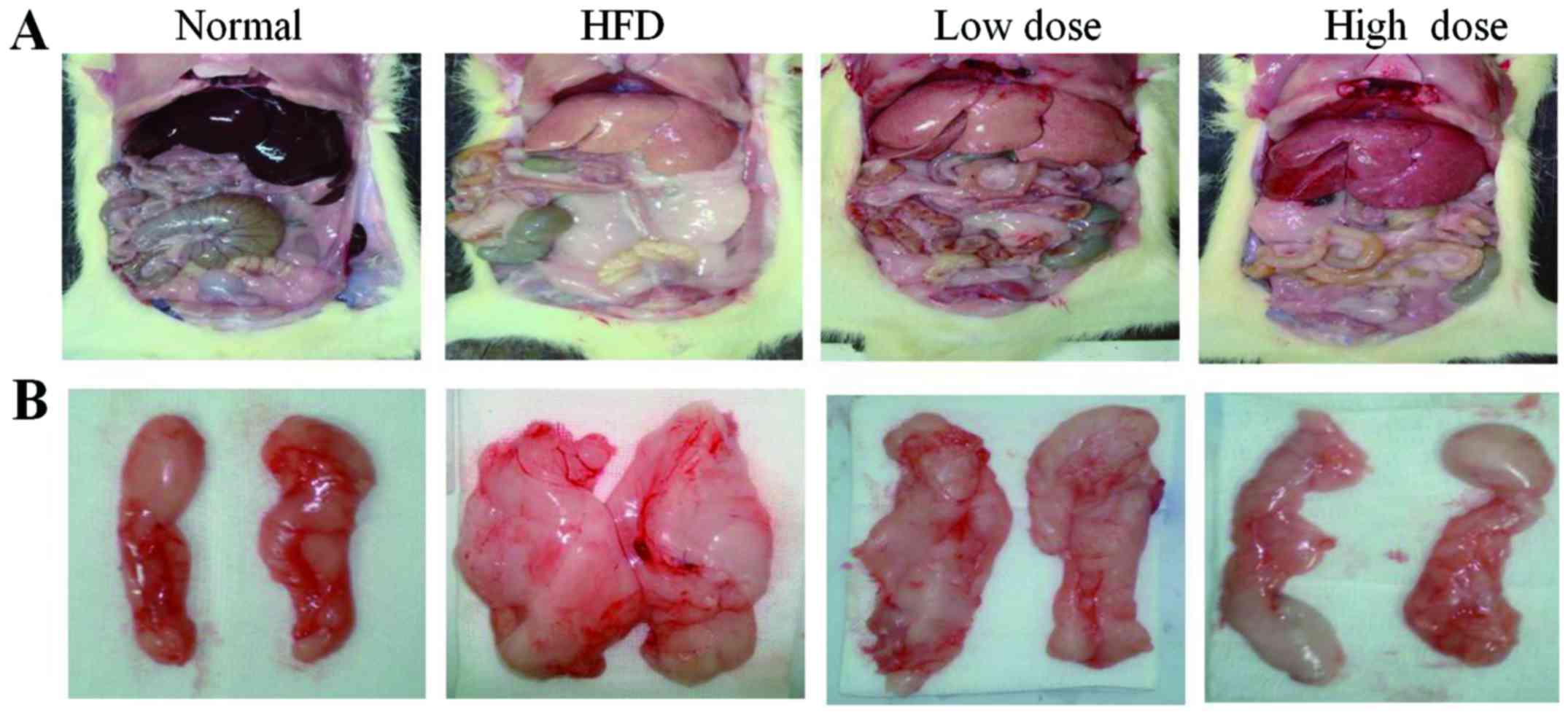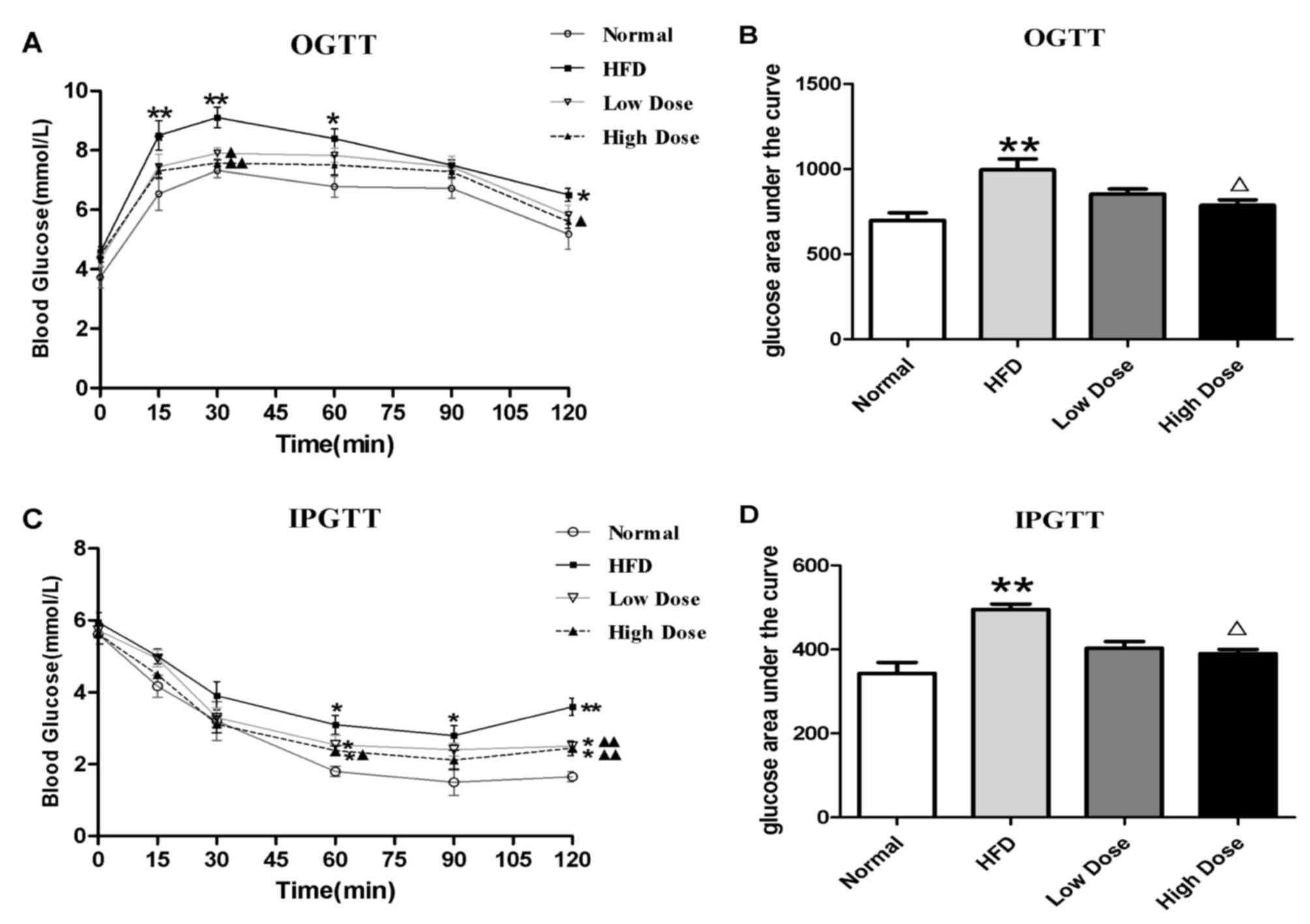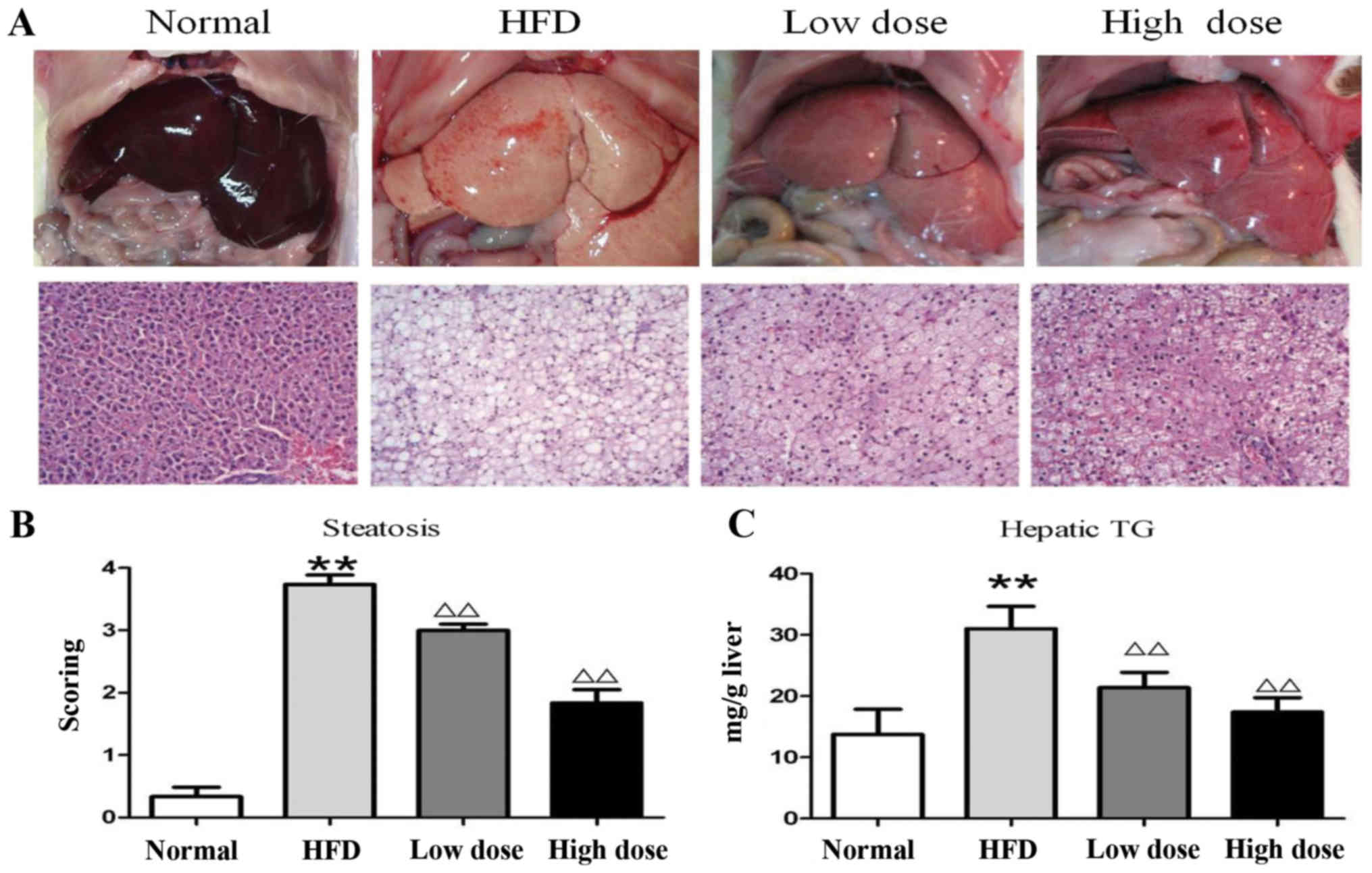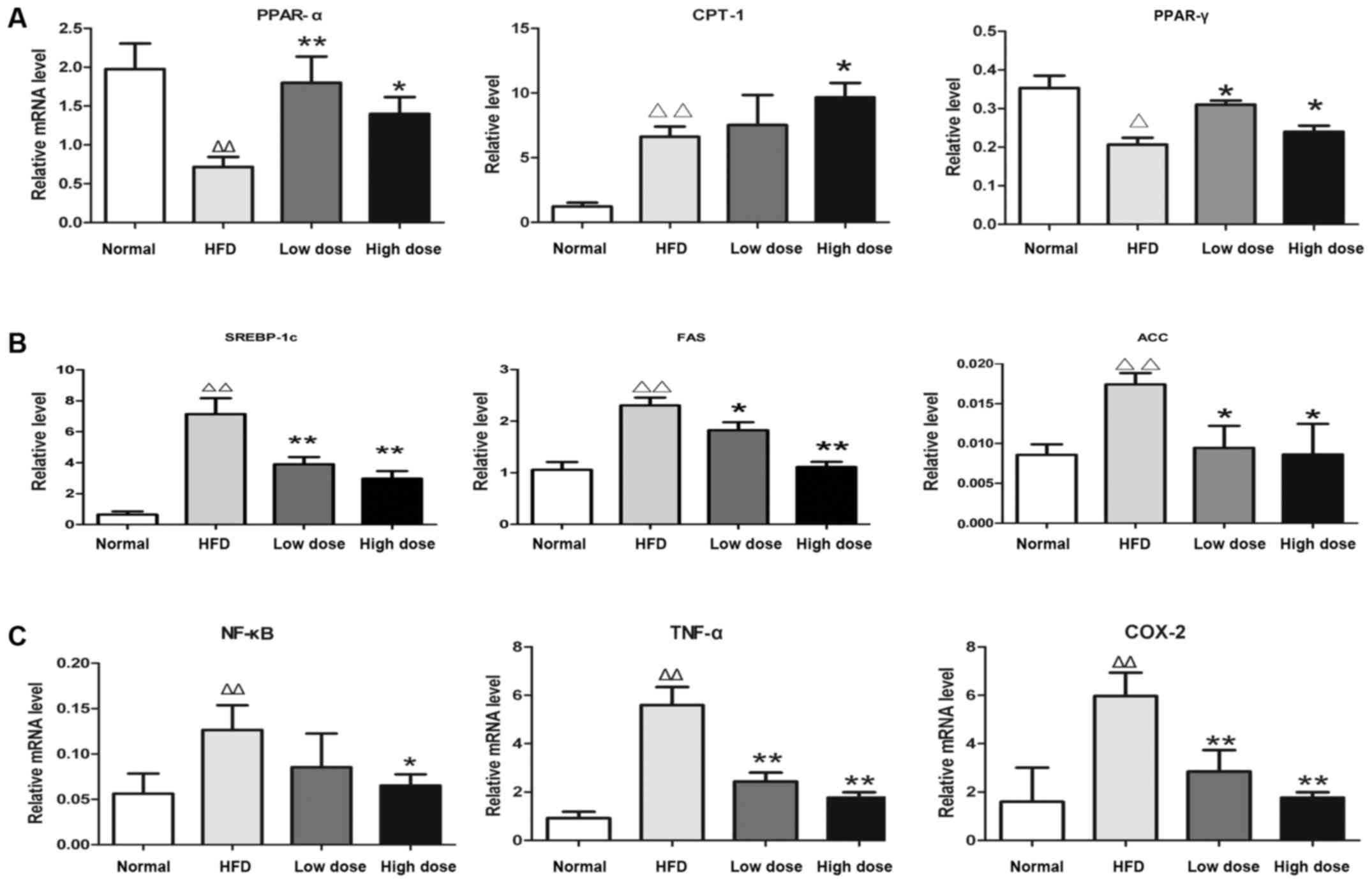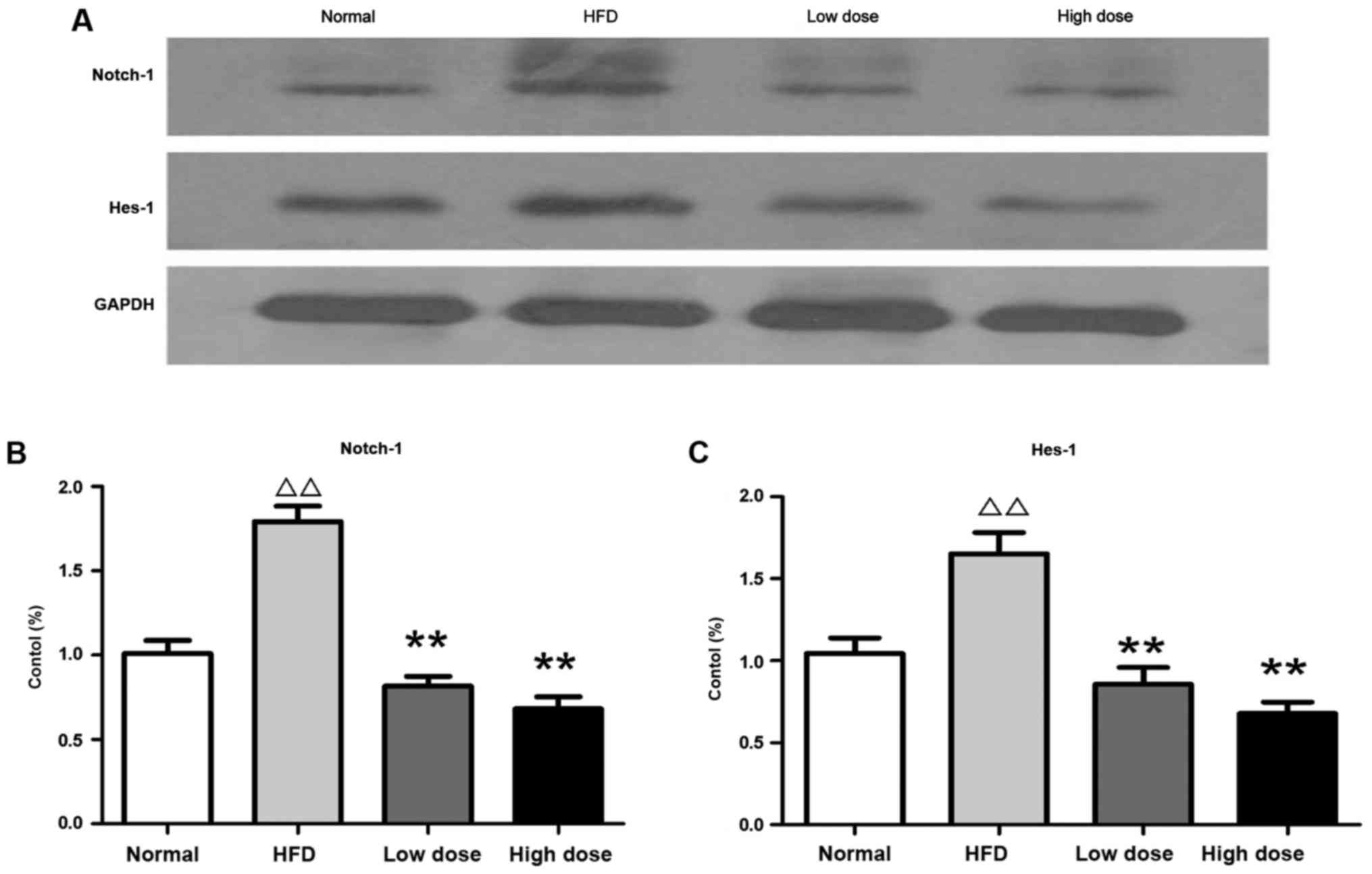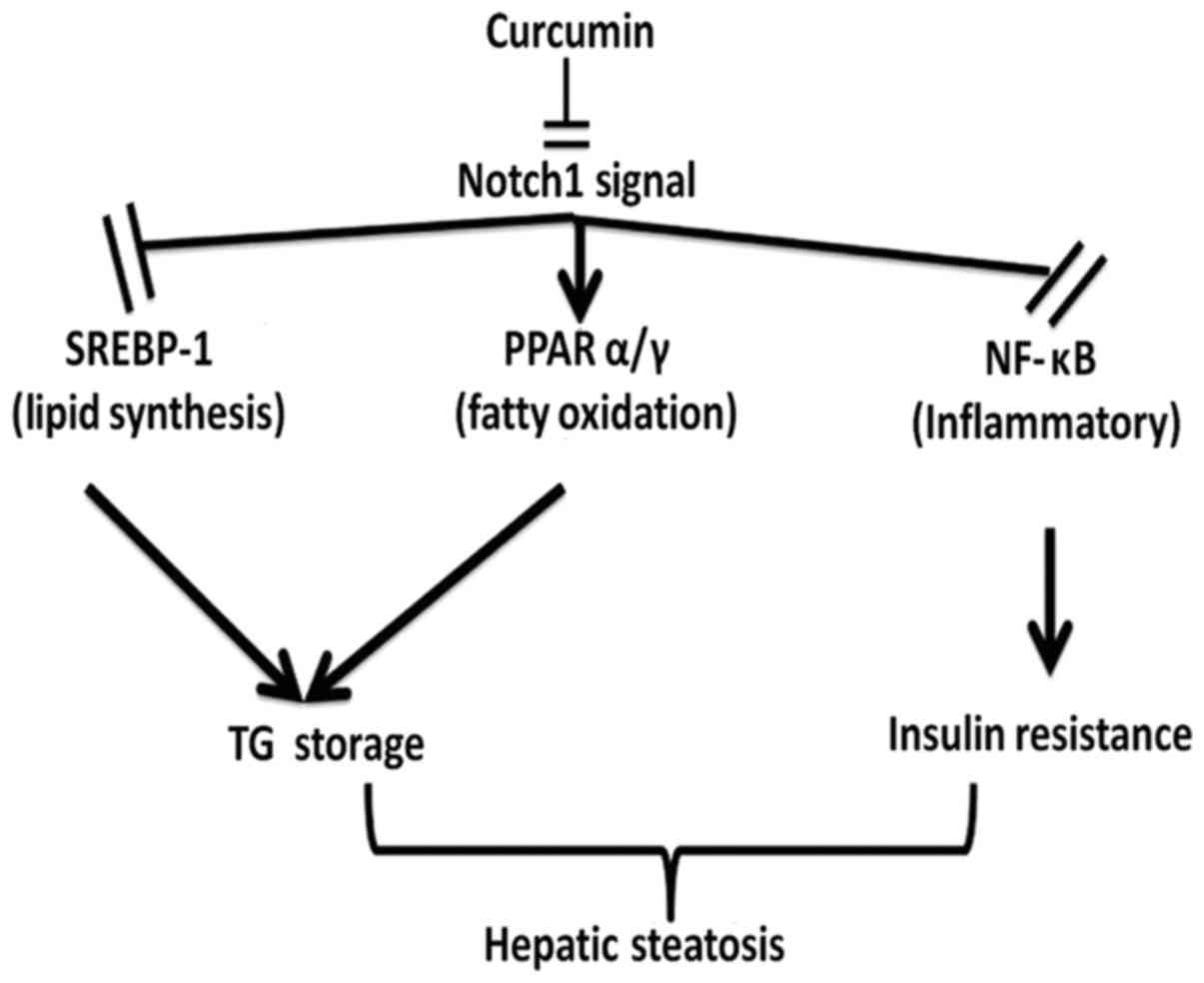|
1
|
Chartoumpekis DV, Palliyaguru DL,
Wakabayashi N, Khoo NK, Schoiswohl G, O'Doherty RM and Kensler TW:
Notch intracellular domain overexpression in adipocytes confers
lipodystrophy in mice. Mol Metab. 4:543–550. 2015. View Article : Google Scholar : PubMed/NCBI
|
|
2
|
Carr RM, Oranu A and Khungar V:
Nonalcoholic fatty liver disease: Pathophysiology and Management.
Gastroenterol Clin North Am. 45:639–652. 2016. View Article : Google Scholar : PubMed/NCBI
|
|
3
|
Schwanbeck R: The role of epigenetic
mechanisms in Notch signaling during development. J Cell Physiol.
230:969–981. 2015. View Article : Google Scholar : PubMed/NCBI
|
|
4
|
Lu J, Xia Y, Chen K, Zheng Y, Wang J, Lu
W, Yin Q, Wang F, Zhou Y and Guo C: Oncogenic role of the Notch
pathway in primary liver cancer. Oncol Lett. 12:42782016.PubMed/NCBI
|
|
5
|
Gridley T and Kajimura S: Lightening up a
notch: Notch regulation of energy metabolism. Nat Med. 20:811–812.
2014. View
Article : Google Scholar : PubMed/NCBI
|
|
6
|
Kim GW, Lin JE, Blomain ES and Waldman SA:
Antiobesity pharmacotherapy: New drugs and emerging targets. Clin
Pharmacol Ther. 95:53–66. 2014. View Article : Google Scholar : PubMed/NCBI
|
|
7
|
Kuo JJ, Chang HH, Tsai TH and Lee TY:
Positive effect of curcumin on inflammation and mitochondrial
dysfunction in obese mice with liver steatosis. Int J Mol Med.
30:673–679. 2012. View Article : Google Scholar : PubMed/NCBI
|
|
8
|
Sha J, Li J, Wang W, Pan L, Cheng J, Li L,
Zhao H and Lin W: Curcumin induces G0/G1 arrest and apoptosis in
hormone independent prostate cancer DU-145 cells by down regulating
Notch signaling. Biomed Pharmacother. 84:177–184. 2016. View Article : Google Scholar : PubMed/NCBI
|
|
9
|
Hackler L Jr, Ózsvári B, Gyuris M, Sipos
P, Fábián G, Molnár E, Marton A, Faragó N, Mihály J, Nagy LI, et
al: The Curcumin Analog C-150, Influencing NF-κB, UPR and Akt/notch
pathways has potent anticancer activity in vitro and in vivo. PLoS
One. 11:e01498322016. View Article : Google Scholar : PubMed/NCBI
|
|
10
|
Wang Z, Zhang Y, Banerjee S, Li Y and
Sarkar FH: Notch-1 down-regulation by curcumin is associated with
the inhibition of cell growth and the induction of apoptosis in
pancreatic cancer cells. Cancer. 106:2503–2513. 2006. View Article : Google Scholar : PubMed/NCBI
|
|
11
|
Yang Y, Duan W, Liang Z, Yi W, Yan J, Wang
N, Li Y, Chen W, Yu S, Jin Z and Yi D: Curcumin attenuates
endothelial cell oxidative stress injury through Notch signaling
inhibition. Cell Signal. 25:615–629. 2013. View Article : Google Scholar : PubMed/NCBI
|
|
12
|
Leclercq IA, Farrell GC, Sempoux C, dela
Peña A and Horsmans Y: Curcumin inhibits NF-kappaB activation and
reduces the severity of experimental steatohepatitis in mice. J
Hepatol. 41:926–934. 2004. View Article : Google Scholar : PubMed/NCBI
|
|
13
|
Liu ZC, Yang ZX, Zhou JS, Zhang HT, Huang
QK, Dang LL, Liu GX and Tao KS: Curcumin regulates hepatoma cell
proliferation and apoptosis through the Notch signaling pathway.
Int J Clin Exp Med. 7:714–718. 2014.PubMed/NCBI
|
|
14
|
Feng XT, Tang SY, Jiang YX and Zhao W:
Anti-diabetic effects of zhuoduqing formula, a chines herbal
decoction, on a rat model of type 2 diabetes. Afr J Tradit
Complement Altern Med. 14:42–50. 2017. View Article : Google Scholar : PubMed/NCBI
|
|
15
|
Ha SK and Chae C: Inducible nitric oxide
distribution in the fatty liver of a mouse with high fat
diet-induced obesity. Exp Anim. 59:595–604. 2010. View Article : Google Scholar : PubMed/NCBI
|
|
16
|
Livak KJ1 and Schmittgen TD: Analysis of
relative gene expression data using real-time quantitative PCR and
the 2(-Delta Delta C(T)) method. Methods. 25:402–408. 2001.
View Article : Google Scholar : PubMed/NCBI
|
|
17
|
Lallukka S and Yki-Järvinen H:
Non-alcoholic fatty liver disease and risk of type 2 diabetes. Best
Pract Res Clin Endocrinol Metab. 30:385–395. 2016. View Article : Google Scholar : PubMed/NCBI
|
|
18
|
Kohjima M, Higuchi N, Kato M, Kotoh K,
Yoshimoto T, Fujino T, Yada M, Yada R, Harada N, Enjoji M, et al:
SREBP-1c, regulated by the insulin and AMPK signaling pathways,
plays a role in nonalcoholic fatty liver disease. Int J Mol Med.
21:507–511. 2008.PubMed/NCBI
|
|
19
|
Gross B, Pawlak M, Lefebvre P and Staels
B: PPARs in obesity-induced T2DM, dyslipidaemia and NAFLD. Nat Rev
Endocrinol. 13:36–49. 2016. View Article : Google Scholar : PubMed/NCBI
|
|
20
|
Brzozowa-Zasada M, Piecuch A, Dittfeld A,
Mielańczyk Ł, Michalski M, Wyrobiec G, Harabin-Słowińska M, Kurek J
and Wojnicz R: Notch signalling pathway as an oncogenic factor
involved in cancer development. Contemp Oncol (Pozn). 20:267–272.
2016.PubMed/NCBI
|
|
21
|
Cai Z, Zhao B, Deng Y, Shangguan S, Zhou
F, Zhou W, Li X, Li Y and Chen G: Notch signaling in
cerebrovascular diseases (Review). Mol Med Rep. 14:2883–2898. 2016.
View Article : Google Scholar : PubMed/NCBI
|
|
22
|
Valenti L, Mendoza RM, Rametta R, Maggioni
M, Kitajewski C, Shawber CJ and Pajvani UB: Hepatic notch signaling
correlates with insulin resistance and nonalcoholic fatty liver
disease. Diabetes. 62:4052–4062. 2013. View Article : Google Scholar : PubMed/NCBI
|
|
23
|
Lai PY, Tsai CB and Tseng MJ: Active form
Notch4 promotes the proliferation and differentiation of 3T3-L1
preadipocytes. Biochem Biophys Res Commun. 430:1132–1139. 2013.
View Article : Google Scholar : PubMed/NCBI
|
|
24
|
Pajvani UB, Shawber CJ, Samuel VT,
Birkenfeld AL, Shulman GI, Kitajewski J and Accili D: Inhibition of
Notch signaling ameliorates insulin resistance in a FoxO1-dependent
manner. Nat Med. 17:961–967. 2011. View
Article : Google Scholar : PubMed/NCBI
|
|
25
|
Pajvani UB, Qiang L, Kangsamaksin T,
Kitajewski J, Ginsberg HN and Accili D: Inhibition of Notch
uncouples Akt activation from hepatic lipid accumulation by
decreasing mTorc1 stability. Nat Med. 19:1054–1060. 2013.
View Article : Google Scholar : PubMed/NCBI
|
|
26
|
Ba K, Yang X, Wu L, Wei X, Fu N, Fu Y, Cai
X, Yao Y, Ge Y and Lin Y: Jagged-1-mediated activation of notch
signalling induces adipogenesis of adipose-derived stem cells. Cell
Prolif. 45:538–544. 2012. View Article : Google Scholar : PubMed/NCBI
|
|
27
|
Lei T, Bi Y, Gao MJ, Gao SM, Zhou LL,
Zheng HL and Chen XD: HES1 inhibits adipogenesis of porcine
mesenchymal stem cells via transcriptional repression of FAD24.
Domest Anim Endocrinol. 45:28–32. 2013. View Article : Google Scholar : PubMed/NCBI
|
|
28
|
Musso G, Cassader M, Cohney S, De Michieli
F, Pinach S, Saba F and Gambino R: Fatty liver and chronic kidney
disease: Novel mechanistic insights and therapeutic opportunities.
Diabetes Care. 39:1830–1845. 2016. View Article : Google Scholar : PubMed/NCBI
|
|
29
|
Yao L, Kan EM, Kaur C, Dheen ST, Hao A, Lu
J and Ling EA: Notch-1 signaling regulates microglia activation via
NF-κB pathway after hypoxic exposure in vivo and in vitro. PLoS
One. 8:e784392013. View Article : Google Scholar : PubMed/NCBI
|
|
30
|
Liu Y, Su C, Shan Y, Yang S and Ma G:
Targeting Notch1 inhibits invasion and angiogenesis of human breast
cancer cells via inhibition Nuclear Factor-κB signaling. Am J
Transl Res. 8:2681–2692. 2016.PubMed/NCBI
|



